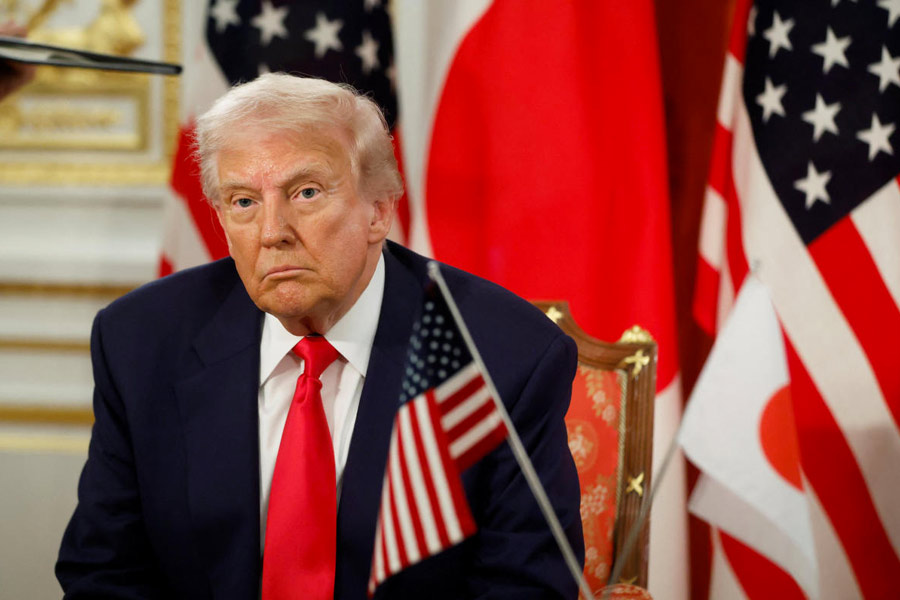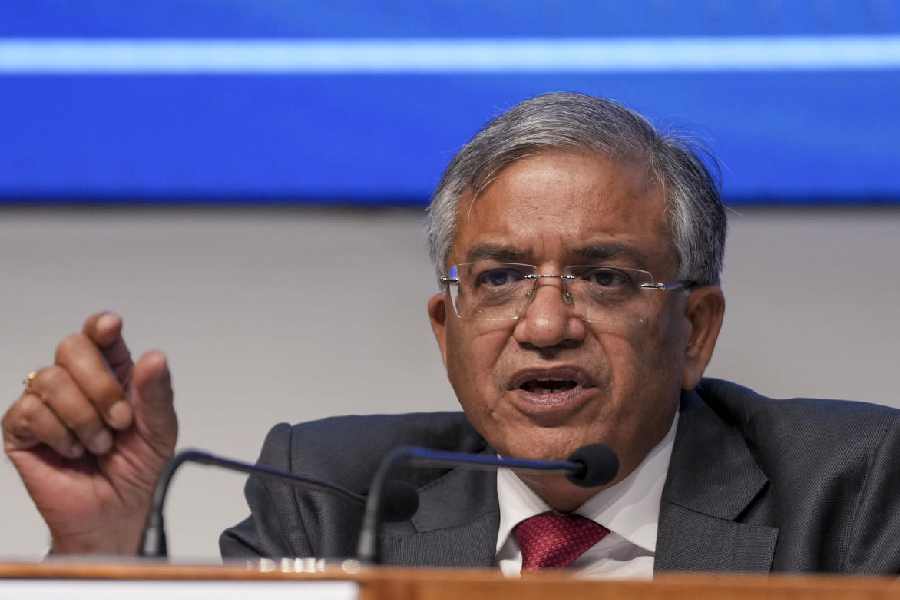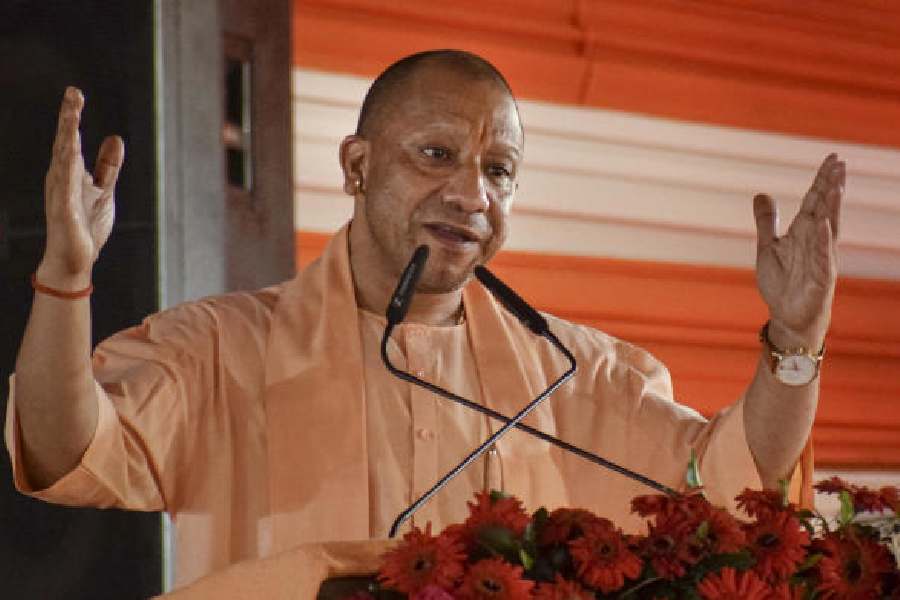The DeMon
.jpg)
Think back to the night of November 8, 2016. Now shut your eyes and think again. At that exact moment, when you saw Prime Minister pronounce his surgical strike on currency - notebandi, DeMo, whatever you call it - what were you doing and what was your first reaction? There was some heart-to-heart happening over the air and sound waves, but a lot of us got the news off social media. Had seemed like a bad joke then. Far away, that very night, the United States too was cracking up to what seemed like a joke that was even worse. In any case, cut to India. When we went to bed that night it was with the vague knowledge that some of the currency we were holding, had turned to dust.

They said: The PM presented the hard fact in layers of tough talk about corruption, terrorism and black money, with a smattering of rhetoric reminiscent of "Tryst With Destiny". Forty-six big and small sentences later, the moot point: "To break the grip of corruption and black money, we have decided that the 500 rupee and 1,000 rupee currency notes presently in use will no longer be legal tender from midnight tonight... The 500 and 1,000 rupee notes hoarded by anti-national and anti-social elements will become just worthless pieces of paper."

Remember, remember, the month of November
Now, notes can't tell national from anti-national, the social from the anti-social. And we couldn't tell the full import of what happened until the morning after. By then the PM had left for Japan. In the coming days, everyone came to hail a photograph of an anguished elder as the face of DeMo - actually any selfie from the ATM queue would have sufficed, only no one was in that frame. Remember the shaadi in the family, the sudden death, the hospitalisation and how you coped or didn't? Why? Because you must. They are banking on your short memory, our collective short memory. Here, let me help. You had to bleed before you could access your own hard-earned money. Queue death became a thing. Almost 100 people died in ATM queues across the country. That's right. And wherever countrymen couldn't queue up, they resorted to barter. A haircut for a litre of milk. Cauliflower in exchange for fish. But no heart to be had in exchange for heart. Jana tha Japan...
They said: The PM appeared the morning-after cheerily, on "jacket ads" of print dailies. Not his doing. He toh had told us - ATM karo . The ad was from a digital wallet congratulating him for his "bold decision". In recent times, some pro-DeMonstrators have taken to saying that Richard Thaler, the behavioural economist who got this year's Nobel, had described the Indian government's move "a policy I have long supported". Masters of the cut and conceal, they omit to say what Thaler said when he heard that Rs 2,000 notes were being introduced. He said - "Damn".
Sab Ka Saath Sab Ka…

When Saturn and Rahu are in the Ascendant, Mars is in the 10th house and Jupiter in trikona, whatever turn you take will be right. Despite all the pain and tears and juggling of work, home and queue, people forgave even when they couldn't forget. All that a section of people distilled from the PM's speech was - have-to-build-muscle-patriotic. The PM had spoken about the honesty of poor auto-rickshaw drivers, taxi drivers, vegetable vendors, even the beggar who may henceforth arrive with a point of sale (PoS) machine instead of begging-bowl... Now the appcab driver, the neighbourhood grocer, the vegetable vendor told you how the inconvenience was transient. DeMo, as they saw it, was a great leveller. The rich guy and the poor guy, both had to get in queue. And you must have got at least one of those forwards about naughty Doctor This or crafty Businessman That being whisked away by the cops? From being a battle against black money to a battle against terrorism, the battle had turned inwards. Have-a-littles vs Have-nots.
They said: When word got around that taxmen were out righting wrongs, FM Arun Jaitley reassured that they would not hound those making small deposits of the demonetised currency. But people with "large amounts of undisclosed monies will have to face the consequences," he said. (Nudge, nudge) The RBI's should have been the voice of reason. But between coming up with new rules and reversing them - it had changed norms 126 times - it had lost its voice. The Opposition said a lot, but in a fractured scenario, it amounted to nothing.
The Break Up

Shhhh. I hear the trolls stirring. To them I say - come and do some math with me. James Wilson did. The engineer working with the Kerala government's cell on the Mullaperiyar Dam water dispute says he was intrigued about the dynamics of demonetisation when he was out dining. "The restaurant did not have enough change," he tells The Telegraph . Regular reaction: think up a jugaad or crib or accept your fate. Wilson reaction: ask questions and then proceed to find answers. And this is what he found. That night, when they killed the 500 and 1000-rupee notes, they killed 86.3 per cent of the total currency in circulation. The break up - Rs 500 notes, 47.8 per cent and Rs 1,000 notes, 38.5 per cent. More of total currency in circulation is a good thing, bodes well for the economy, says Wilson. He draws a pretty, pretty sky-blue bar showing the value of currency in circulation going up, up, up - even post 2014. Sourced from RBI Annual Report 2015-16. And the question he raises, I leave you with. The government has held that demonetisation was planned at least a good half year before it was sprung on us. Asks Wilson, "So if this was a long-term plan, why did the RBI print and circulate this excess Rs 1.56 lakh crore in the last 7 months into circulation?" Indeed. There was a recorded jump of value of currency from Rs 16.415 lakh crore on March 31, 2016, to Rs 17.975 lakh crore on November 4, 2016. Source: Reserve Money Weekly Statement of the RBI dated November 4, 2016. But then, the reverse knock. Having deprived that humongous proportion of currency of legality, the government seemed unprepared to fill the chasm. New notes, it was apparent, hadn't been printed in enough numbers, ATMs hadn't been configured, those that slowly were, remained dry on cash. Chaos.
They said: On November 8, PM ji said: "The magnitude of cash in circulation is directly linked to the level of corruption... High circulation of cash strengthens the hawala trade which is directly connected to black money and illegal trade in weapons." Then why did the government push out all that cash?
The Make Up

Someone might have attempted an answer but no one even bothered asking loud and clear. By now Wilson was addicted to the number chomping. In painstaking detail he has laid bare the volume of notes that needed to be replaced - 24,000 million - and the printing capacity of the four printing presses we have in Nashik, Dewas, Salboni and Mysore. He says: "...it can be seen that this quantity of 24,000 million notes is equal to the annual turnover of all our printing presses!" And asks: "If that is the case, when will the government and the RBI meet the target of replacing the demonetised notes with new notes?"
They said: The PM said it was going to be "temporary hardship". Come to think of it, Raghuram Rajan had been in a great hurry to leave.
The Cook Up
Next up, some figures on the bugbear called fake currency. Sometime after invoking demonetisation as the antidote to black money and fuel for terrorist operations, and before extolling the virtues of a cashless economy, something had been said about it being a fake currency slayer. Turns out, the Indian Statistical Institute, Calcutta, had undertaken a study. In his blog Wilson cites a reply in Parliament from the minister of state for finance. It reads: "As per the [ISI] study, the face value of FICN [Fake Indian Currency Note] in circulation was found to be about Rs 400 crore... the value remained constant for the last four years." Did you say, there she goes again, quoting some dam engineer? Fair enough, but do the math yourself. Total currency in circulation as on November 4, 2016, was Rs 17.975 lakh crore. Fake currency, Rs 400 crore. And you need to yank the rug from under the feet of two billion unsuspecting and kill 86 per cent of your currency to tackle that? But in the service of the nation and nationalism...
They said: They kept throwing figures around. Jump in income tax returns filed by so much per cent. Increase in number of tax payers - 56 lakh, 91 lakh, 33 lakh... Anthony Gonsalves yaad aa gaya. "You see the whole country of the system is juxtaposition by the haemoglobin in the atmosphere because you are sophisticated rhetorician intoxicated by the exuberance of your own publicity..."
Don’t, R.I.P.
The black money didn't quite get flushed out. The estimated value of bank notes received on June 30, 2017, was Rs 15.28 lakh crore, the RBI said in its annual report. The total value of invalidated notes had been Rs 15.44 lakh. And the RBI is not done counting. We didn't even talk about the farmers. Out of sight, out of mind - theirs, ours - they continue to bleed. The ignominies of demonetisation - those who suffered will tell you. And some won't be able to, like Sathi Bai from Varapuzha in Ernakulam. She had managed to save four lakh rupees but hadn't heard of DeMo, couldn't exchange the old notes in time and died trying to. One cannot afford to forget. One mustn't.
Illustration: Suman Choudhury

.jpg)









